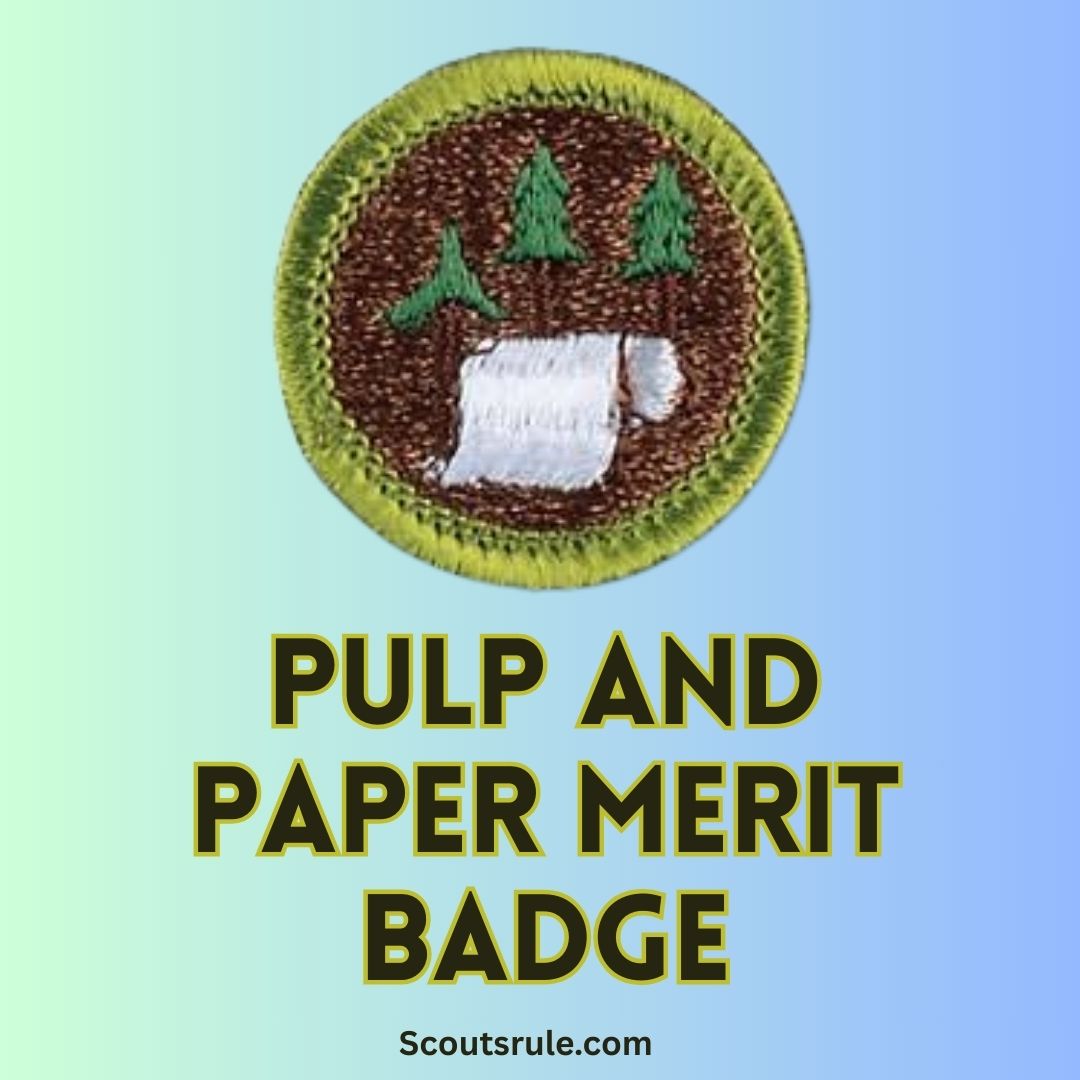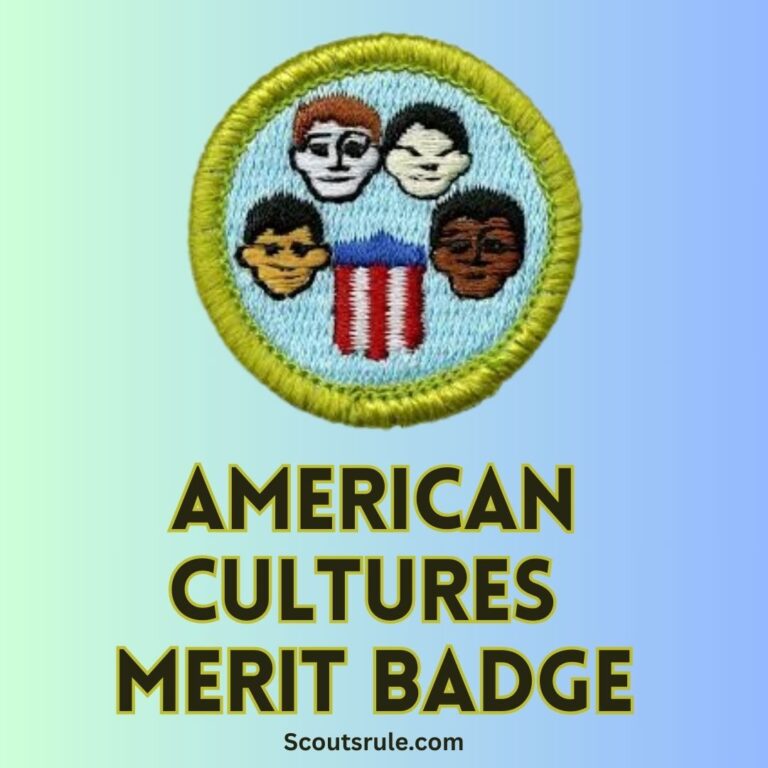
Paper is all around us. From books and newspapers to packaging and artwork, nearly every aspect of our daily lives is influenced by this versatile material. The Pulp and Paper Merit Badge invites Scouts to explore the complete lifecycle of paper—from its ancient origins and historical evolution to modern manufacturing techniques and recycling processes. More than a technical study, this badge encourages a deep appreciation for the art, science, and sustainable practices behind papermaking. In pursuing this merit badge, you will gain vital insights into the pulp and paper industry, explore hands-on projects, and even consider career opportunities within this critical sector.
Post Contents
- 2. History of Papermaking and Its Role in Society
- 3. The Pulp and Paper Industry
- 4. Sources of Papermaking Fibers
- 5. The Papermaking Process and Recycling
- 6. Coated Paper and Other Chemical/Mechanical Modifications
- 7. Exploring Paper in Daily Life
- 8. Field Experience and Research
- 9. Career Opportunities in the Pulp and Paper Industry
- 10. Conclusion
2. History of Papermaking and Its Role in Society
Paper’s journey began over 2,000 years ago in ancient China. Early papermakers combined natural fibers—such as hemp, bamboo, and rags—to create sheets that eventually revolutionized communication and record keeping. As the art of papermaking spread along trade routes to the Middle East and Europe, civilizations discovered that paper was not only economical but also transformative in education, administration, and literature.
Paper plays an integral role in society and the economy. It is the medium in which stories are told, cultures are recorded, and businesses operate. Today, despite the digital age, paper remains essential in packaging, printing, and even creative endeavors. Understanding the historical context of papermaking helps us appreciate the evolution of technology and the ongoing challenges related to resource usage and environmental impact.
3. The Pulp and Paper Industry
The pulp and paper industry is a massive global enterprise that turns raw wood into the paper products we use every day. This industry involves several key steps that include forest management, pulping, papermaking, and recycling. The process encompasses both art and precision engineering and is tightly interwoven with sustainable practices to ensure that tree populations and ecosystems remain healthy.
3.1 Forest Management & Sustainable Practices
Proper forest management is fundamental to the pulp and paper industry. Trees are the primary raw material, and the industry has developed methods to plant, grow, and harvest trees on a sustainable basis. Key practices include:
- Planting and Cultivation:
Specially managed tree farms or forestry plantations are created so that trees can be grown in a controlled environment. This ensures a continuous supply of the raw material without overwhelming natural forests. - Sustainable Forest Management (SFM):
SFM techniques are designed to balance the demand for trees with environmental conservation. This approach includes practices such as selective harvesting, replanting, and preserving areas of natural forest to maintain biodiversity and prevent soil erosion. - Diversified Use of Forestland:
In many cases, forestland is not solely reserved for papermaking. The industry often involves multiple uses for trees and forest areas, including recreation, wildlife habitat, and other lumber or biomass products. This helps spread economic benefits while preserving ecological functions.
3.2 Pollution Control and Environmental Stewardship
Environmental responsibility is a cornerstone of modern papermaking. The industry has come under increasing scrutiny for its impact on water and air quality. To address these concerns, the pulp and paper industry has implemented a variety of pollution control measures:
- Wastewater Treatment:
Paper mills often use water-intensive processes. Modern mills incorporate closed-loop systems to treat and recycle water, reducing both waste and the need for fresh water. - Emission Controls:
By investing in technologies that reduce the release of harmful chemicals and particulates into the air, mills can lower their carbon footprint and improve local air quality. - Recycling Initiatives:
Recycling paper not only conserves forests but also significantly reduces pollution. Efforts are in place to improve the quality and efficiency of the recycling process, thereby decreasing the overall impact on the environment.
Understanding these sustainable practices is vital. Not only does it enable you to appreciate the scale and complexity behind the paper products we take for granted, but it also reinforces the importance of environmental stewardship—a topic of increasing relevance in today’s world.
4. Sources of Papermaking Fibers
The pulp and paper industry relies on a variety of tree species to supply the fibers required for papermaking. You will need to identify at least four major types of trees used in this process, and understand the different methods employed to extract fibers.
4.1 Types of Trees Used
Some of the primary trees utilized include:
- Pine and Spruce:
Softwoods like these are common in papermaking due to their long fibers, which impart strength and durability to paper products. - Eucalyptus:
Known for its rapid growth and fine fiber quality, eucalyptus is a favored hardwood in many regions. - Poplar and Cottonwood:
These trees are valued for their high cellulose content and are often used for producing lighter, high-quality paper.
Each of these trees serves a unique role in product development, and many forests managed by the pulp and paper industry deliver additional benefits such as habitat for wildlife or sources for other wood products.
4.2 Methods of Fiber Extraction and Pulping Processes
There are mainly two methods of converting wood fibers into pulp:
- Mechanical Pulping:
In this process, logs are ground into pulp through mechanical means. This method preserves much of the wood’s original fibers, creating strong paper, but it can result in lower brightness and increased energy consumption. - Chemical Pulping:
Also known as the kraft process, chemical pulping uses chemicals to break down lignin—the substance that binds fibers together—thereby separating them. The resulting pulp is lighter in color and can exhibit superior strength characteristics. This method also allows for recycling of chemicals, incorporating environmental safeguards.
Each method results in distinct qualities of pulp, influencing the final paper product’s characteristics.
4.3 Bleaching and Its Implications
Bleaching is used to remove residual lignin and resulting color from the pulp. Some pulps are bleached to achieve a white, clean appearance that is essential for high-quality printing paper, magazines, or art materials. Bleaching involves chemically treating the pulp (often with chlorine dioxide or oxygen-based compounds) to eliminate the natural brown tint. However, this process must be managed carefully to avoid environmental harm and ensure that the chemicals are properly neutralized during disposal.
5. The Papermaking Process and Recycling
Once pulp is produced, the journey to making paper is both an art and a science. A major component of the merit badge is to explain how paper is made and to understand the process of recycling used paper.
5.1 From Wood to Pulp to Paper
The traditional papermaking process includes several important steps:
- Pulping:
Wood logs are converted into pulp through either mechanical or chemical pulping. The pulp is then washed and refined to achieve the desired quality. - Forming the Sheet:
The refined pulp is mixed with water and spread onto a fine mesh screen. As the water drains away, the pulp fibers interlock to form a continuous mat. - Pressing and Drying:
The wet mat passes through a series of presses that remove excess water, then moves through drying ovens or heated cylinders. This step solidifies the sheet into the final paper form. - Finishing:
Finally, the paper may be cut, rolled, or further processed (such as coating) to meet specific product requirements.
5.2 Recycling and a Hands-On Project
Recycling plays a vital role in today’s paper industry. Recycled paper reduces the need for virgin pulp, conserves natural resources, and lowers waste. Here’s a simple hands-on project idea:
Making a Sheet of Paper by Hand:
- Materials Needed:
Used paper (preferably shredded), water, a blender, a screen or fine mesh, a frame (like a picture frame) lined with a fabric mesh, and a flat, absorbent surface. - Process:
- Soak the shredded paper in water overnight.
- Blend the soaked paper until it forms a smooth slurry.
- Pour the slurry evenly over the screen stretched across your frame.
- Allow the water to drain, forming an even layer of pulp.
- Carefully remove the newly formed paper and press it between absorbent towels to remove excess water.
- Allow it to dry completely.
This project not only demonstrates the papermaking process but also underscores the importance of recycling as a sustainable practice.
6. Coated Paper and Other Chemical/Mechanical Modifications
Coated paper is one of the many ways that paper is altered to meet different needs. Coating involves applying a layer of substances (usually clay, latex, or polymers) to the surface of paper. This enhances properties such as brightness, smoothness, and the ability to reproduce high-quality images. For example, coated papers are often used in high-end magazines and art books.
Apart from coating, the paper manufacturing process may include additional modifications—chemical treatments or mechanical processes—that enhance its strength, finish, or functionality for specialized uses such as packaging, wallpaper, or filtration materials.
By exploring how different treatments change paper’s properties, you gain insight into the innovation and versatility that drive this industry.
7. Exploring Paper in Daily Life
An integral part of the merit badge requires you to identify and list pulp and paper products. This exercise reinforces the extent to which paper impacts our lives.
- Product List Exercise:
Create a list of at least 15 pulp or paper products found in your home. These might include books, journals, newspapers, cardboard boxes, tissue paper, wrapping paper, paper cups, posters, and more. - Discussion:
Share examples of 10 of these products with your merit badge counselor. Discuss the roles these products play in daily living and how advances in papermaking have transformed everyday items from mere packaging to innovative design elements.
This reflection not only builds awareness of how ubiquitous paper is but also encourages you to think about improvements and sustainability in design.
8. Field Experience and Research
One of the more engaging aspects of the Pulp and Paper Merit Badge is the opportunity for hands-on experiences outside the classroom. With your parent’s and counselor’s approval, choose one of the following activities:
- Pulp Mill Visit:
Visit a facility where wood is converted into cellulose fibers. Observe how raw logs are processed, pulped, and refined. - Paper Mill Tour:
Tour a paper mill to see the complete papermaking process. Examine how pulp is transformed into continuous sheets of paper, and learn about quality control measures. - Container or Box Plant:
Observe how paper products are manufactured into packaging, from forming and cutting to finishing techniques that make durable containerboard. - Recycling Facility:
Explore a recycled paper collection or sorting facility. Learn about the processes that transform discarded paper into new, usable products. - Independent Research:
Use books, magazines, the Internet (with parental permission), and other research tools to investigate how paper products are developed. Identify the role of research and development in improving the efficiency, environmental impact, and quality of paper products.
Document your findings and experiences, and then share them with your counselor. This research and practical exposure provide a deeper understanding of the industry and highlight the real-world challenges and innovations involved in papermaking.
9. Career Opportunities in the Pulp and Paper Industry
The challenge of the Pulp and Paper Merit Badge extends into future career exploration. As you learn more about the industry, consider researching the roles available within it. Some examples include:
- Process Engineers:
These professionals work on developing and improving the manufacturing processes of mills. They focus on efficiency, quality control, and environmental sustainability. - Forest Managers and Sustainable Resource Specialists:
Experts in sustainable forest management work to balance ecological care with industrial needs. Their work ensures that forests are managed responsibly and remain viable as raw material sources. - Research and Development Scientists:
R&D specialists investigate new methods for processing pulp, developing advanced coatings, or creating eco-friendly recycling methods, all of which drive the future of papermaking. - Quality Assurance Technicians:
Focused on ensuring that all paper products meet strict quality standards, these technicians help maintain the functionality and consumer safety of paper products.
By selecting one career opportunity that interests you, and researching the education, training, and skills required, you not only fulfill the merit badge requirements but also begin to chart a potential future path inspired by your interests in science, manufacturing, or environmental stewardship.
10. Conclusion
The Pulp and Paper Merit Badge offers a window into one of the world’s most fundamental industries—a process that transforms trees into the vital medium that underpins education, communication, and commerce. From tracing the historical roots of papermaking to understanding modern technological advances and sustainable practices, this merit badge is a journey through innovation, environmental responsibility, and the power of transformation.
By immersing yourself in the complexity of the pulp and paper industry, you learn to appreciate the delicate balance between economic development and environmental conservation. Hands-on projects, field visits, and in-depth research not only help you meet the requirements of the merit badge but also cultivate skills in problem-solving, critical thinking, and creative innovation. Through the exploration of various processes—whether it’s understanding chemical pulping and bleaching or experiencing the art of hand-making a sheet of paper—you build a foundation for lifelong learning and foster a deeper respect for natural resources.
Ultimately, this merit badge challenges you to see paper not as a simple commodity but as a marvel of engineering and art—one that continues to evolve with sustainability and technological innovation at its core. Embrace the exploration, document your experiments, and enjoy the transformative journey from tree to paper. Your newfound knowledge may even inspire future contributions or innovations in one of today’s most vital industries.
Happy exploring, and may your journey through the world of pulp and paper be as enriching and transformative as the medium itself!

Hi, Robin here, A former lead Scout and here I share my inspiring stories about USA Scouts, leadership, adventure, how to guides and more.






